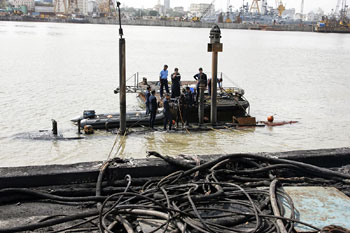INDIAN ARMED FORCES CHIEFS ON
OUR RELENTLESS AND FOCUSED PUBLISHING EFFORTS

SP Guide Publications puts forth a well compiled articulation of issues, pursuits and accomplishments of the Indian Army, over the years

I am confident that SP Guide Publications would continue to inform, inspire and influence.

My compliments to SP Guide Publications for informative and credible reportage on contemporary aerospace issues over the past six decades.
Sindhurakshak accident casts shadow on submarine force levels

The disaster onboard INS Sindhurakshak (S-63) has ominous implications for the Indian Navy, which has been working against huge odds to keep its fleet available and serviceable in the face of downward trend in force levels. The Navy's conventional fleet is now down to 13 submarines (9 Kilo-class & 4 HDW Class-209), out of which only eight are available at any given time.
While the INS Chakra is already on patrol, the Navy needs at least two more Akula-II class submarines to shore up its long-endurance patrolling capability. The Project 75 Scorpene line has slipped another year, with the first submarine scheduled for delivery only in 2016, while the follow-on Project 75-India is yet to take off, with the request for proposal (RFP) still being finalised before release. The situation is critical as far as the submarine arm is concerned given that the long-term submarine plan envisages an ideal fleet of 24 conventional submarines, apart from nuclear-powered boats. The Navy will be holding high-level discussions shortly to consider emergency measures, including the possibility of leasing conventional submarines from Russia.





